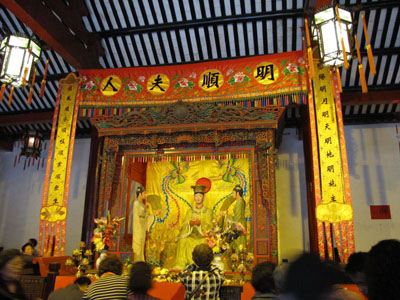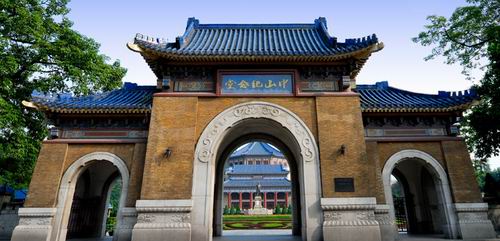Wooden Fish Songs are a combined form of storytelling and singing performed in Guangzhou dialect; they are frequently featured in Cantonese opera and Cantonese singing. Legend has it that a few Buddhists brought scripture chanting to Guangdong in 527 AD. The scripture chanting was subsequently merged with local ballads and eventually evolved into a new form of storytelling and chanting of Cantonese tune. Wooden Fish Songs are popular in Guangzhou, Nanhai, Panyu, and Shunde.
Performance of Wooden Fish Songs requires no accompaniment by musical instruments. A hollow piece of wood, dubbed a "wooden fish", is beat to create rhythms; hence, this form of singing is also known as "singing Wooden Fish Songs" or "Chanting Wooden Fish Books". A Wooden Fish song typically has four lines in a paragraph, which are repeated in singing, and the ending words of all lines in a paragraph are strictly rhythmic.
Dragon Boat Songs emerged slightly later than Wooden Fish Songs. There are two accounts regarding their origin. According to one account, the songs were created by the offspring of a once wealthy family in Shunde County during the reign of Emperor Qian Long of the Qing Dynasty (1736-1795). In another account, the songs were composed by the Heaven and Earth Society during the reign of Emperor Kang Xi as part of the anti-Qing efforts. The songs are typical of ballads in watery towns and immensely popular in the Pearl River Delta region.
Historically, Dragon Boat Songs were mostly sung by blind beggar artists on ferry boats in a low-pitched rising and falling tone, accompanied intermittently by thongs and small drums, and featuring funny lyrics. The singers also held a wooden model of a dragon boat in hand, hence of the name "Dragon Boat Songs". Traditional Dragon Songs are grouped into multiple categories, including mythical, historical, romantic, and lyrical.
All materials marked with "source: English.gz.gov.cn" on this website (including but not limited to text, photographs, audio and video materials) are the copyrighted property of Guangzhou International (the official website of Guangzhou Municipality). Without prior authorization from Guangzhou International, any media, website, organization or individual shall not transmit, interlink, distribute or republish such materials in any form. Any media and website authorized to republish such materials shall mark them with "source: Guangzhou International (English.gz.gov.cn)". Infringement of these copyrights will result in legal action.




